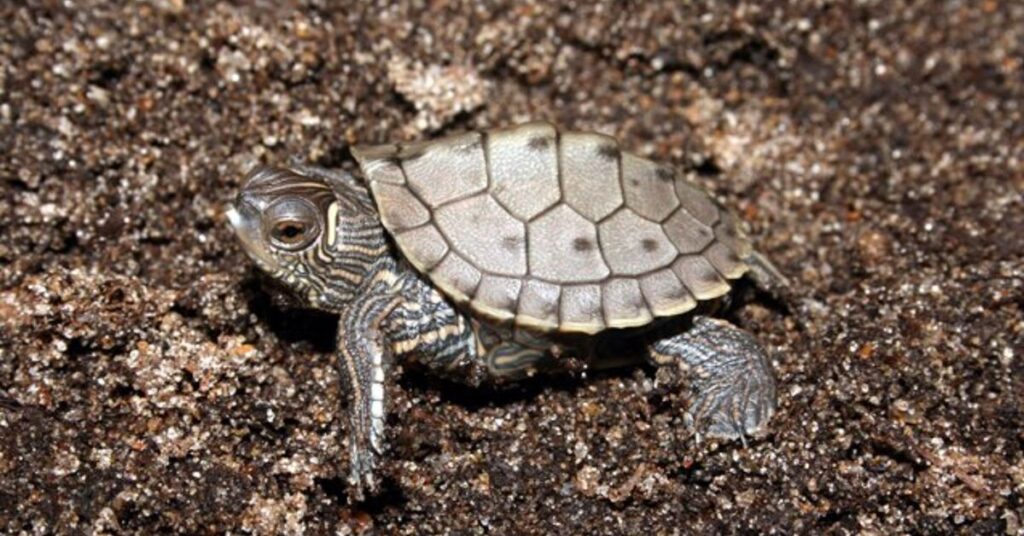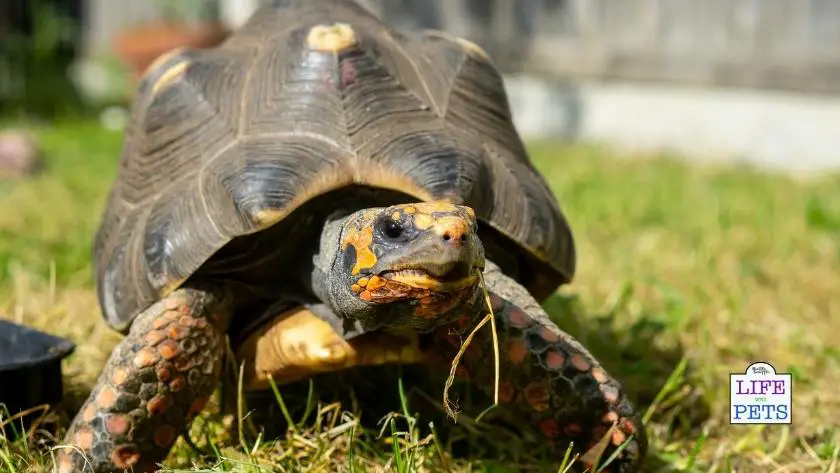If you’re a proud owner of a baby turtle, you know how important it is to provide them with the right nutrition and encourage their natural feeding behaviors. That’s where “Encouraging Natural Feeding Behaviors In Baby Turtles: Stimulating Hunting Instincts” comes in. This innovative product is designed to simulate the thrill of hunting for food, helping your baby turtle develop its natural instincts while ensuring a healthy and well-balanced diet. Say goodbye to the traditional feeding methods and say hello to a fun and enriching feeding experience for your little shelled friend. Baby turtles are fascinating creatures, and one of the most important aspects of their care is understanding and replicating their natural feeding behaviors. By creating the ideal feeding environment, stimulating their hunting instincts, and training them to feed naturally, you can ensure their overall health and well-being. In this article, we will explore the various factors that affect natural feeding behaviors, how to create the ideal feeding environment, the importance of training baby turtles for natural feeding, identifying and addressing feeding challenges, supplementing diet and nutrition, the importance of regular veterinary check-ups, and the benefits of encouraging natural feeding behaviors in baby turtles.
Feeding Habits in the Wild
In the wild, baby turtles have to rely on their instincts to find and capture their food. They are opportunistic feeders, eating a variety of prey, including insects, small fish, plants, and algae. They use their keen sense of sight and smell to locate their prey and their hunting instincts to capture and consume it. Observing and understanding these natural feeding habits is crucial for providing a healthy and stimulating environment for baby turtles in captivity.
Importance of Replicating Natural Feeding Behaviors
Replicating natural feeding behaviors is essential for the physical and mental well-being of baby turtles. By providing them with an environment that closely mimics their natural habitat, you are creating a more enriching and fulfilling experience for them. This not only promotes their overall health but also ensures that they can express their natural behaviors, leading to a more balanced and fulfilling life in captivity.
Environmental Conditions
The environment in which baby turtles are kept plays a crucial role in their feeding behaviors. Temperature, lighting, and humidity are important factors to consider when creating the ideal feeding environment. Baby turtles need a warm, well-lit, and adequately humid environment to thrive. Maintaining these environmental conditions closely resembles the natural conditions they would experience in the wild, making them more likely to exhibit their natural feeding behaviors.
Temperature and Lighting
Temperature and lighting are critical aspects of creating the ideal feeding environment for baby turtles. Turtles are ectothermic creatures, meaning they rely on external heat sources to regulate their body temperature. By providing a basking area with a heat lamp or UVB light, you can ensure that the turtles have access to an appropriate temperature range, which helps stimulate their appetite and digestion. Additionally, proper lighting, including both UVA and UVB rays, is necessary for the synthesis of Vitamin D3, which plays a vital role in their calcium metabolism.

Habitat Design
The design of the turtle’s habitat should also encourage natural feeding behaviors. Offering hiding places, such as rocks and plants, allows baby turtles to retreat and ambush their prey, just as they would in the wild. Incorporating natural elements, like logs or branches, further enhances the turtles’ natural environment and stimulates their hunting instincts. By creating a well-designed and enriched habitat, you can provide the turtles with opportunities to engage in their natural feeding behaviors.
Social Interaction
Social interaction with other turtles can also have a significant impact on natural feeding behaviors. Turtles are social creatures and in the wild, often forage for food together. By housing baby turtles together, you can replicate this natural social behavior, which can help stimulate their appetite and encourage them to engage in natural feeding behaviors. However, it is important to monitor their interactions closely and ensure that there is no aggression during feeding.
Setting up the Habitat
To create the ideal feeding environment, setting up the turtle’s habitat is crucial. The habitat should include a suitable tank or enclosure with proper lighting, heating, and filtration systems. The tank should be spacious enough to provide room for swimming, basking, and hunting. It is important to provide a variety of substrates, such as sand or gravel, that closely resemble the turtle’s natural environment. Additionally, incorporating natural elements, such as rocks, logs, and plants, creates an enriching and stimulating environment for the turtles.
Proper Temperature and Lighting
Maintaining proper temperature and lighting is crucial for the overall health and well-being of baby turtles. A basking area with a heat lamp or UVB light should be provided to mimic the natural sunlight that turtles require for their physical and mental health. The temperature should be maintained within the appropriate range for the specific species of turtle, and a thermometer can be used to monitor the temperature accurately. A timer can also be used to ensure consistent lighting cycles, providing the turtles with the necessary UVB rays for Vitamin D3 synthesis.

Offering Hiding Places
Hiding places play a crucial role in replicating natural feeding behaviors. Baby turtles are ambush predators, and providing them with hiding places allows them to exhibit their natural hunting instincts. Rocks, plants, and other decor items can create hiding spots within the habitat. These hiding places not only simulate the turtle’s natural environment but also offer them a sense of security, making them more likely to engage in their natural feeding behaviors.
Dietary Variety
Offering a diverse diet is essential for encouraging natural feeding behaviors in baby turtles. In the wild, turtles have access to a wide range of prey, including insects, plants, and small fish. By providing a varied diet that closely resembles their natural food sources, you can stimulate their appetite and encourage them to exhibit their natural feeding behaviors. It is important to research the specific dietary requirements of your turtle species and offer a combination of commercial turtle pellets, live prey, and fresh vegetables or fruits.
Using Live Prey
Using live prey can be an effective method to stimulate the hunting instincts of baby turtles. Small insects, such as crickets or mealworms, can be introduced into the turtle’s enclosure. The movement of the live prey mimics the natural movement of prey in the wild, triggering the turtles’ hunting instincts. Live prey also provides the turtles with mental and physical stimulation, promoting their overall health and well-being. It is important to ensure that the live prey is an appropriate size for the turtles to consume safely.
Feeding in a Separate Tank
Feeding baby turtles in a separate tank can help stimulate their natural feeding behaviors. By transferring the turtles to a designated feeding tank, you create a distinct feeding environment that encourages the turtles to associate this area with feeding. This separation also reduces the risk of overfeeding or aggression during feeding. It is important to provide the turtles with a suitable tank size and proper temperature and lighting in the feeding tank.

Introducing Natural Movement
Introducing natural movement during feeding can further stimulate the hunting instincts of baby turtles. Moving the prey item around the tank or using a feeding tool to simulate the movement can help simulate the natural movement of prey in the wild. This encourages the turtles to engage in active hunting behaviors and can make feeding time a more enriching and stimulating experience for them.
Utilizing Food Disguises
Utilizing food disguises can be another effective way to encourage natural feeding behaviors. Wrapping or hiding the food within a piece of lettuce or a worm can mimic the way food is found and consumed in the wild. This challenges the turtles to use their natural instincts to locate and capture their prey, promoting their mental stimulation and enhancing their natural feeding behaviors.
Hand Feeding Techniques
Hand feeding can be a useful technique to train baby turtles to associate humans with feeding. This can help them overcome any initial fear or hesitation and encourage their natural feeding behaviors. Using tweezers or tongs to offer food directly in front of the turtle’s face and allowing them to bite and consume the food can establish a positive association between humans and feeding. It is important to be patient and consistent with hand feeding, gradually transitioning them to self-feeding over time.
Gradual Transition to Self-Feeding
Gradually transitioning baby turtles to self-feeding is an important step in encouraging their natural feeding behaviors. As the turtles grow and become more comfortable in their environment, they should be given the opportunity to hunt and capture their own food. This can be done by reducing the frequency of hand feeding and gradually introducing whole prey items or live insects. It is important to monitor their progress and provide any necessary assistance or adjustment during this transition period.

Reward System
Implementing a reward system can be an effective way to reinforce natural feeding behaviors. Once the baby turtles successfully hunt and capture their prey, offering a small treat or piece of food can serve as a positive reinforcement. This helps them associate their hunting behaviors with a reward, promoting continued engagement in their natural feeding behaviors. It is important to note that the reward should be given immediately after the successful hunting behavior to ensure the association is made effectively.
Consistency and Patience
Consistency and patience are key when training baby turtles for natural feeding. Establishing a consistent feeding routine and sticking to it helps the turtles develop a sense of predictability and security. It is important to be patient and understanding, as each turtle may have its own unique temperament and learning pace. With consistent training and patience, baby turtles can learn to engage in their natural feeding behaviors and become more self-reliant.
Lack of Appetite
A lack of appetite can be a common challenge when encouraging natural feeding behaviors in baby turtles. It is important to monitor their feeding habits closely and offer a variety of food options to entice their appetite. Providing a well-balanced diet and ensuring that the environmental conditions are suitable can help stimulate their appetite. If the lack of appetite persists, it is advisable to seek veterinary advice to rule out any underlying health issues.
Feeding Behavior Changes
Changes in feeding behavior can indicate potential issues that need to be addressed. If baby turtles suddenly become less active during feeding or refuse to eat altogether, it could be a sign of stress or illness. It is important to evaluate any changes in the environment, diet, or social interactions that may be affecting their feeding behavior. Seeking veterinary advice is recommended if there are any significant and persistent changes in feeding behavior.

Aggression during Feeding
Aggression during feeding can occur, especially when baby turtles are housed together. Competition for food resources can lead to aggressive behaviors, such as biting or chasing. This can hinder the natural feeding behaviors of some turtles and cause stress. To address aggression during feeding, it may be necessary to separate the turtles during feeding or provide multiple feeding areas to ensure each turtle has access to food. Monitoring their interactions closely and making adjustments in the feeding routine can help minimize aggression during feeding.
Overfeeding and Obesity
Overfeeding is a common mistake made by turtle owners, which can lead to obesity and other health issues. Baby turtles should be fed small and appropriate portions multiple times a day, rather than large meals all at once. It is important to monitor their body condition and adjust their diet accordingly. Overfeeding not only affects their overall health but can also hinder their natural feeding behaviors, as they may become passive and less motivated to hunt.
Understanding Nutritional Requirements
Understanding the nutritional requirements of baby turtles is crucial for maintaining a balanced diet. A well-balanced diet should include a combination of protein, vitamins, minerals, and plant matter. Researching the specific dietary requirements of your turtle species and consulting with a veterinarian or reptile specialist can ensure that the turtles receive the appropriate nutrients for their growth and development.
Calcium and Vitamin D3 Supplements
Calcium and Vitamin D3 are vital nutrients for the overall health and well-being of baby turtles. Calcium is essential for proper bone and shell development, while Vitamin D3 aids in calcium absorption. In captivity, it can be challenging to provide turtles with an adequate amount of Vitamin D3 through natural sunlight alone. Therefore, calcium and Vitamin D3 supplements should be provided to ensure proper nutrition and prevent deficiencies.
Balancing Commercial and Natural Diets
Balancing commercial diets with natural food sources is important for baby turtles. While commercial turtle pellets offer a convenient and nutrient-rich option, incorporating live prey and fresh vegetables or fruits into their diet helps stimulate their natural feeding behaviors. It is important to research the nutritional value and ingredients of commercial diets and supplement them with natural food sources to achieve a well-rounded diet.
Avoiding Harmful Foods
Certain foods can be harmful or toxic to baby turtles and should be avoided. Foods high in fat, salt, or sugar should be eliminated from their diet, as these can lead to obesity and other health issues. Additionally, toxic plants or insects should be avoided to prevent any potential harm to the turtles. It is important to research and familiarize yourself with the safe and appropriate foods for your turtle species.
Health Assessment
Regular veterinary check-ups are essential for maintaining the health and well-being of baby turtles. During these check-ups, the veterinarian can assess the turtle’s overall health, including their weight, shell condition, and any signs of illness. They can also provide guidance on diet and nutrition, as well as address any specific concerns or questions regarding the turtle’s feeding behaviors.
Parasite Control
Parasites can be a common issue in baby turtles and can negatively affect their feeding behaviors. Regular veterinary check-ups allow for parasite screenings and appropriate treatment if necessary. By ensuring that the turtles are free from parasites, you can promote their appetite and overall well-being.
Dietary Assessment
Veterinary check-ups provide an opportunity for a dietary assessment. The veterinarian can evaluate the nutritional content of the turtle’s diet and recommend any necessary adjustments. They can also provide guidance on portion sizes, feeding frequency, and the appropriate combination of commercial and natural diets. A dietary assessment can ensure that the baby turtles receive the necessary nutrients for optimal growth and development.
General Care Tips
In addition to focusing on natural feeding behaviors, it is important to provide general care for baby turtles. This includes proper hygiene practices, regular tank maintenance, and environmental enrichment. Regular tank maintenance, such as water changes and substrate cleaning, helps maintain a healthy and clean environment for the turtles. Environmental enrichment, such as adding new decor or rearranging the tank periodically, prevents boredom and promotes mental stimulation.
Physical and Mental Stimulation
Encouraging natural feeding behaviors provides baby turtles with both physical and mental stimulation. The ability to engage in their natural hunting instincts keeps them mentally engaged and prevents boredom. This mental stimulation, in turn, promotes overall mental health and well-being. Additionally, the physical activity involved in hunting and capturing prey helps maintain their physical fitness and prevents sedentary behavior.
Growth and Development
Encouraging natural feeding behaviors facilitates the proper growth and development of baby turtles. By providing a varied and nutrient-rich diet, you ensure that the turtles receive the necessary nutrients for their growth. The physical activity involved in hunting and capturing prey also promotes their muscle development and overall physical fitness. By replicating their natural feeding behaviors, you are supporting their natural growth and development.
Enhanced Natural Behaviors
Replicating natural feeding behaviors enhances the turtles’ natural behaviors and instincts. This enriches their overall experience in captivity and allows them to express their natural behaviors, leading to a more balanced and fulfilling life. The ability to engage in their natural hunting instincts not only provides mental stimulation but also reinforces their natural behaviors, ensuring their overall well-being.
Preventing Behavioral Issues
Encouraging natural feeding behaviors in baby turtles can help prevent the development of behavioral issues. Boredom, stress, and sedentary behavior are common issues faced by turtles in captivity. By providing them with an environment that closely mimics their natural habitat and allowing them to engage in their natural hunting instincts, you can prevent these behavioral issues from arising. Natural feeding behaviors promote a more fulfilling and enriching experience for the turtles, reducing the likelihood of any negative behavioral consequences.
In conclusion, understanding and replicating baby turtles’ natural feeding behaviors is crucial for their overall health and well-being. By creating the ideal feeding environment, stimulating their hunting instincts, training them to feed naturally, identifying and addressing feeding challenges, supplementing their diet and nutrition, ensuring regular veterinary check-ups, and encouraging natural feeding behaviors, you can provide a fulfilling and enriching experience for baby turtles in captivity. By promoting their natural behaviors and instincts, you contribute to their overall growth, development, and happiness.
